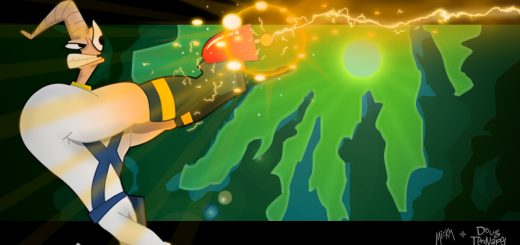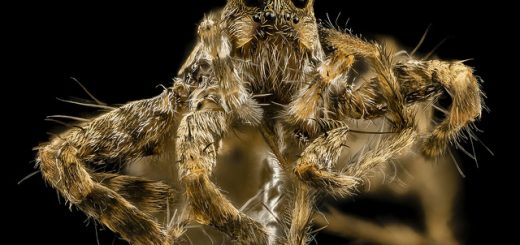Allelopathy: When Plants Attack!
Biochemical warfare used by aliens on the attack sounds like the plot of an apocalyptic sci-fi story. However under the ground there is biochemical warfare occurring, invaders being repelled and defenders being overcome. Despite their apparent passive and inanimate natures, plants are continually battling against each other, against the elements and against everything that wants to eat them. One of the most interesting and controversial ways that this occurs is through allelopathy. Allelopathy is defined as the event of one plant producing a chemical that does not cause harm to itself or members of its species, but harms others. Understandably, gardeners are particularly interested in allelopathic chemicals, because targeted weedkillers that affect everything but your prize carrots are highly sought after. However, there are further applications than just growing vegetables.
The Controversy
Allelopathy has been dogged by numerous controversies, primarily the one main accusation that it does not actually exist. To give you an understanding of why this might be, it’s probably best to give an animal example. Venomous snakes could be considered allelopathic. There are various tests that can be done to prove it is the snake’s venom that has a negative effect and nothing else. So, let’s transfer this logic to plants. It’s very difficult to tell when a plant is doing anything. When a snake poisons another creature it generally bites it. When a plant produces chemicals, they don’t move or visibly change in any way. (There are of course exceptions, but plant hormones are a story for another time). And if the plant next door dies, well it could be for any number of reasons. Perhaps your potentially allelopathic plant has been nicking all its water, or physically attacking its roots and leaves. Maybe the area it’s in is too salty, or acid, or dry, or waterlogged. Perhaps some creature has been munching on it. The possibilities are almost endless. In order to prove allelopathy, you also have to prove that the target plant would have been affected negatively even if everything else in its life had been perfect, and that is notoriously difficult.
A Case Against Allelopathy
One of the scientists who was a major proponent of allelopathy was Cornelius Muller. He conducted a range of experiments in the coastal scrub and desert of California. In these deserts there are plants which appear to show allelopathic effects 1. That is an area where nothing grows that is attributed to allelopathic properties of a certain plant. One of these potentially allelopathic plants was purple sage (Salvia leucophylla). Purple sage is a dense shrub that grows in stands, around which there are usually halos of bare ground of about 2 meters. Muller suggested that this was because of cineole and camphor produced by the leaves that adsorbed to seeds and stopped them from growing. To test this he tried to grow seeds that he had placed over purple sage leaves. Sure enough, very few of the seeds grew, and those that struggled their way into life were severely inhibited and rather sick.
This appears to be an amazing victory for allelopathy. Here are seeds that do not grow when put into contact with the hypothetical allelochemical. However, despite this apparent positive result, Muller had not properly investigated the allelopathy of sage. Firstly the seeds he tried to grow were not the seeds found around the area of the sage stands. He used crop seeds like cucumber and oats instead of the grasses and wildflowers that surrounded the sage. When experiments were repeated with native seeds (native here meaning seeds that are originally from the area surrounding the stands), the seeds had no bother at all growing, and were very healthy. Muller had also dismissed another possible factor that could have been causing the halo of inhibition – herbivory. Small birds and mammals lived in the sage stands as their thick and dense foliage provided excellent cover from predators. These animals would eat seeds as a major part of their diet. It was possible that these animals would run out from the sage to collect the seeds close by, perhaps scavenging usually up to 2 meters from the stand, but occasionally going further afield when times got tough, thus explaining the unusual halo of inhibition. This hypothesis was put forward by Bruce Bartholomew, who tested it by building a herbivore free pen in the halo of no growth. Within, the pen flourished with grasses and wildflowers. This finally put the case for allelopathy in sage to rest.
The Case for Allelopathy
The main problem for allelopathy is that whenever a plant evolves to create an allelopathic chemical, its neighbours will evolve defences; it’s an arms race 2. This is why purple sage affected oats and cucumber, but not the grasses and wildflowers that have always grown close by. In turn, this suggests that plants that are unfamiliar to each other could have allelopathic effects because they have been prepared for completely different circumstances. This is the evolutionary equivalent of bringing a knife to a gun fight. In actuality, a plant that is ill prepared for its new circumstances is not that much of a bother, it may annoy gardeners that they can’t get their wonderful and exotic new plant to grow, but it doesn’t affect the ecosystem. It’s when all the native plants have knives, and another plant wanders up with a gun that you have to worry. In fact, this idea is known as the novel weapons hypothesis].
The ecology of different landscapes is always in a fine balance. If any one plant gets too much of a hold, it can form a monoculture, which is where there is nothing but that one kind of plant anywhere. This wipes out huge amounts of diversity, not only in plant populations but also in insect and herbivore populations. One way an invader plant could do this is with different allelochemicals, which was indeed shown to be the case in the American Palouse grassland 3. In the grassland there are lots of different grasses, but recently a European invader has been rampaging across the land, destroying everything in its path, and leaving only monoculture behind: spotted knapweed (Centaurea maculosa). This is odd, not least because knapweed is not that aggressive here in Europe. However, a potential allelochemical was discovered – catechin. Catechin acted as knapweed’s gun in this situation. Essentially it allowed the grass to tell all the other grasses, ‘Your money or your life!’ and then take both anyway. Knapweed was grown with a severely affected species, blue bunchgrass (Festuca idahoensis) under a variety of conditions. An experiment where both plants were grown in close proximity in soil that neutralised the catechin, essentially disarming knapweed, showed interesting results. In this situation, the bunchgrass was stopping knapweed from growing. Further experiments to control for things like competition and herbivory were undertaken, but it was eventually concluded that knapweed was bombarding the bunchgrass with allelochemicals: it was biological warfare. This was of particular importance because the biocontrol of knapweed that was being employed, a small root eating insect, was actually causing the plants to produce more catechin, or to stretch a metaphor it was acting as an arms dealer, aggravating the problem. The moral of the story being, if something invades your ecosystem, chucking more invaders into the ecosystem is rarely going to solve the problem.
Conclusion
So in an ideal world, where ecosystems were well protected and invaders never occur, allelopathy would not exist. However, since biological invaders are a big problem worldwide, understanding allelopathy, what triggers it and how to neutralise it could save ecosystems. This is aside from the benefit that the horticultural among us get from having weedkillers that can tell what is a weed and what isn’t.
References
- Hasley, R.W., (2004). In search of allelopathy: an eco-historical view of the investigation of chemical inhibition in California coastal sage shrub and chamise chaparral. Journal of Torrey Botanical Society 131: 343-367.
- Callaway, R.M., Ridenour, W.M., Laboski, T., Weir, T., Vivanco, J.M., (2005). Natural selection for resistance to the allelopathic effects of invasive plants. Journal of Ecology 93: 576-583.
- Pollock, J.R., Callaway, R.M., Thellen, G.C., Holben, W.E., (2009). Catechin-metal interactions as a mechanism for conditional allelopathy by the invasive plant Centaurea maculosa. Journal of Ecology 97: 1234-1242.










